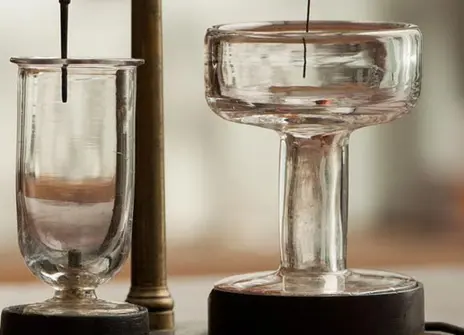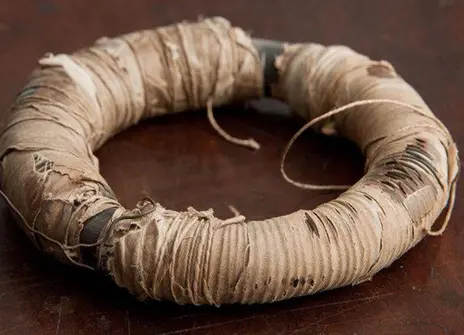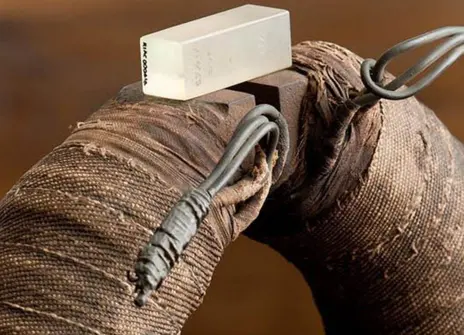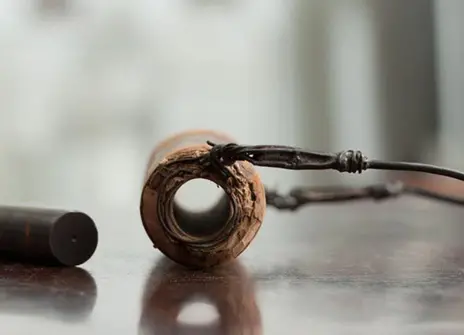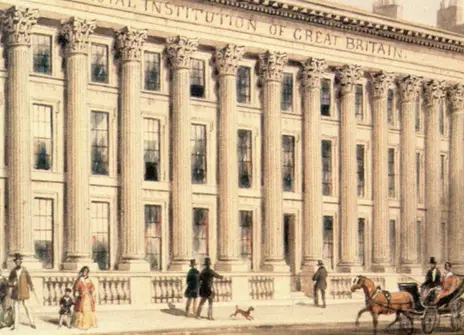A complete edition of Michael Faraday's approximately 4900 extant letters in six volumes, published by the Institution of Engineering and Technology (formerly the Institution of Electrical Engineers) under the editorship of Frank James at the Royal Institution.
The project has taken over twenty years to complete with volume 1 published in 1991 and volume 6 in December 2011.
You can read all six volumes of Faraday's correspondence on the Institute of Engineering and Technology digital library.
Brief overviews of each volume are given below.
A history of Michael Faraday's correspondence
This volume, in which just under 60% of the letters were previously unpublished, traces Faraday's early life from near the end of his apprenticeship as a bookbinder in 1812 to 1831, the year he discovered electromagnetic induction. It deals with his appointment as Chemical Assistant in the Royal Institution, his Continental tour with Humphry Davy, his membership of the City Philosophical Society, his learning science, his election to the Royal Society and his rise within the Royal Institution to being Superintendent of the House and Director of the Laboratory in which capacity he helped to establish the Friday Evening Discourses. Scientific work includes his discovery of electro-magnetic rotations and induction and the liquefaction of chlorine gas as well as a vast amount of professional consultancy work including the project to improve optical glass at the end of the 1820s.
Major correspondents in this volume include the friends of his youth, Benjamin Abbott, Richard Phillips, and Edward Magrath, the chemist Humphry Davy who employed Faraday at the Royal Institution, the French physicists AM Ampère and JNP Hachette, the engineers Mark Isambard and Isambard Kingdom Brunel, the Swiss chemist Charles-Gaspard De La Rive, the Governor of the Royal Military Academy Percy Drummond, the polymathic John Herschel and, of course, his future wife, Sarah Barnard whom he married in 1821.
This volume, in which over 70% of the letters were previously unpublished, covers most of the 1830s. During this period, Faraday pursued the consequence of his discovery of electro-magnetic induction, demonstrated the identity of electricities and revised entirely the theories of electro-chemistry (in the process coining now familiar words such as electrode, cathode and ion) and the nature of electricity.
His correspondents in this volume include men and women of science (such as William Whewell, Charles Babbage, GB Airy, JD Forbes, Joseph Henry, Alexander von Humboldt, Macedonio Melloni, Christian Schoenbein, Ada Lovelace and Mary Somerville), antiquaries (such as John Gage and Thomas Pettigrew), military and naval men (such as John Barrow, Charles Pasley and Percy Drummond), artists (such as William Wyon, HW Pickersgill, John Constable and John Landseer) and politicians (such as Prime Minister Lord Melbourne, Lord Holland and many members of the Holland House circle).
This volume, in which nearly 75% of the letters were previously unpublished, covers most of the 1840s. During the early part of this period, Faraday's scientific productivity declined markedly, but in 1845 he discovered the magneto-optical effect and diamagnetism, which allowed him to argue for his views on the nature of matter. In his work for the state, Faraday conducted, with Charles Lyell, the inquiry into the Haswell Colliery disaster in 1844. Faraday's correspondence with Trinity House illustrates the crucial role which Faraday played in the development of the lighthouse service in the middle third of the nineteenth century.
Major correspondents in this volume include the Astronomer Royal George Biddell Airy, the Irish chemist Thomas Andrews, the mathematician Charles Babbage, the Governor-General of Canada Charles Bagot, the engineer Isambard Kingdom Brunel, the philanthropist Angela Burdett Coutts, the French Chemist Jean-Baptiste-Andre Dumas, the Secretary of Trinity House Jacob Herbert, Byron's daughter Ada Lovelace, the President of the Royal Institution the Duke of Northumberland, Prime Minister Robert Peel, the German physicist Julius Plücker, the Swiss chemist Christian Schoenbein, the natural philosopher William Thomson and the Cambridge philosopher William Whewell.
This volume in which nearly two-thirds of the letters were previously unpublished covers 1849 and the first half of the 1850s. Topics covered include Faraday's extensive work on terrestrial and atmospheric magnetism, the beginning of the electrification of lighthouses, his work on the theory of telegraphic retardation, his advice to various government departments on the prosecution of the Anglo-French war against Russia, his possible second (and thus final) exclusion from the Sandemanian Church and the controversy over his views on table-turning.
Correspondents in this volume include the Astronomer Royal G.B. Airy, the Irish chemist, Thomas Andrews, the Professor of Natural Philosophy at Glasgow University William Thomson, the Secretary of the Royal Institution John Barlow, the physician Henry Bence Jones, the Genevan savant and politician August De La Rive, the French chemist and politician J.B. Dumas, the mathematician Charles Babbage, the new Professor of Natural Philosophy at the Royal Institution John Tyndall, the engineer I.K. Brunel, the philanthropist Angela Burdett Coutts, the lawyer and natural philosopher William Robert Grove, the assistant secretary of the Royal Institution and co-religionist Benjamin Vincent, the Secretary of Trinity House Jacob Herbert, the German physicist Julius Plücker, the director of the 'magnetic crusade' and Royal Society officer Edward Sabine, the Swiss chemist Christian Schoenbein, the Cambridge philosopher William Whewell and the Admiral of the Fleet Thomas Byam Martin.
This volume, in which just over 70% of the letters were previously unpublished, covers the latter half of the 1850s and most of 1860. Topics include: Faraday's work on regelation, the transmission of light through gold and his attempts to bring gravity into his general scheme of forces; the offer by Queen Victoria, and his acceptance, of a Grace and Favour House at Hampton Court; his advice to Trinity House, the Board of Trade and the Royal Commission on Lighthouses; his investigation of the deterioration of the stonework of the relatively new Houses of Parliament; the conservation issues surrounding the National Gallery's pictures; and his appointment by Emperor Napoleon III to be a Commander of the Legion of Honour.
Major correspondents included the Astronomer Royal G.B. Airy, the new Secretary of Trinity House PH Berthon, the Birmingham glassmaker JT Chance, the French chemist and politician JBA Dumas, the Assistant Secretary of the Board of Trade TH Farrer, the German mathematician Julius Plücker, the Cambridge trained mathematical natural philosophers James Clerk Maxwell, George Gabriel Stokes and William Thomson, Faraday's colleague at the Royal Institution John Tyndall and the Swiss chemist Christian Schoenbein whose daughter died while in London.
This final volume, in which just over 80% of the letters are previously unpublished, covers Faraday's life from 1860 to his death in 1867. Also published here are letters that could not be dated and letters that should have been included in volumes one to five but which had not been located when those volumes were published. The dominant topic of the 1860s (covered in nearly 40% of the letters) is Faraday's involvement with the lighthouse service relating in particular to his advice to Trinity House and the Board of Trade on matters such as electric light and the controversial issue of fog signals.
Also detailed is the complex process by which his various posts were transferred to John Tyndall. Similar issues existed with Faraday's gradual withdrawal from his duties at the Royal Institution, including the misguided attempt to make him President. And of course, running through many of the letters are comments on his declining health and impending death.
Major correspondents included the Astronomer Royal G.B. Airy, the Secretary of Trinity House PH Berthon, the Birmingham glassmaker JT Chance, the Assistant Secretary of the Board of Trade TH Farrer, the German mathematician Julius Plücker, the Cambridge trained mathematical natural philosophers James Clerk Maxwell, George Gabriel Stokes and William Thomson, Faraday's colleagues at the Royal Institution Henry Bence Jones, John Tyndall and Benjamin Vincent, the Swiss chemist Christian Schoenbein and the astronomer James South.

